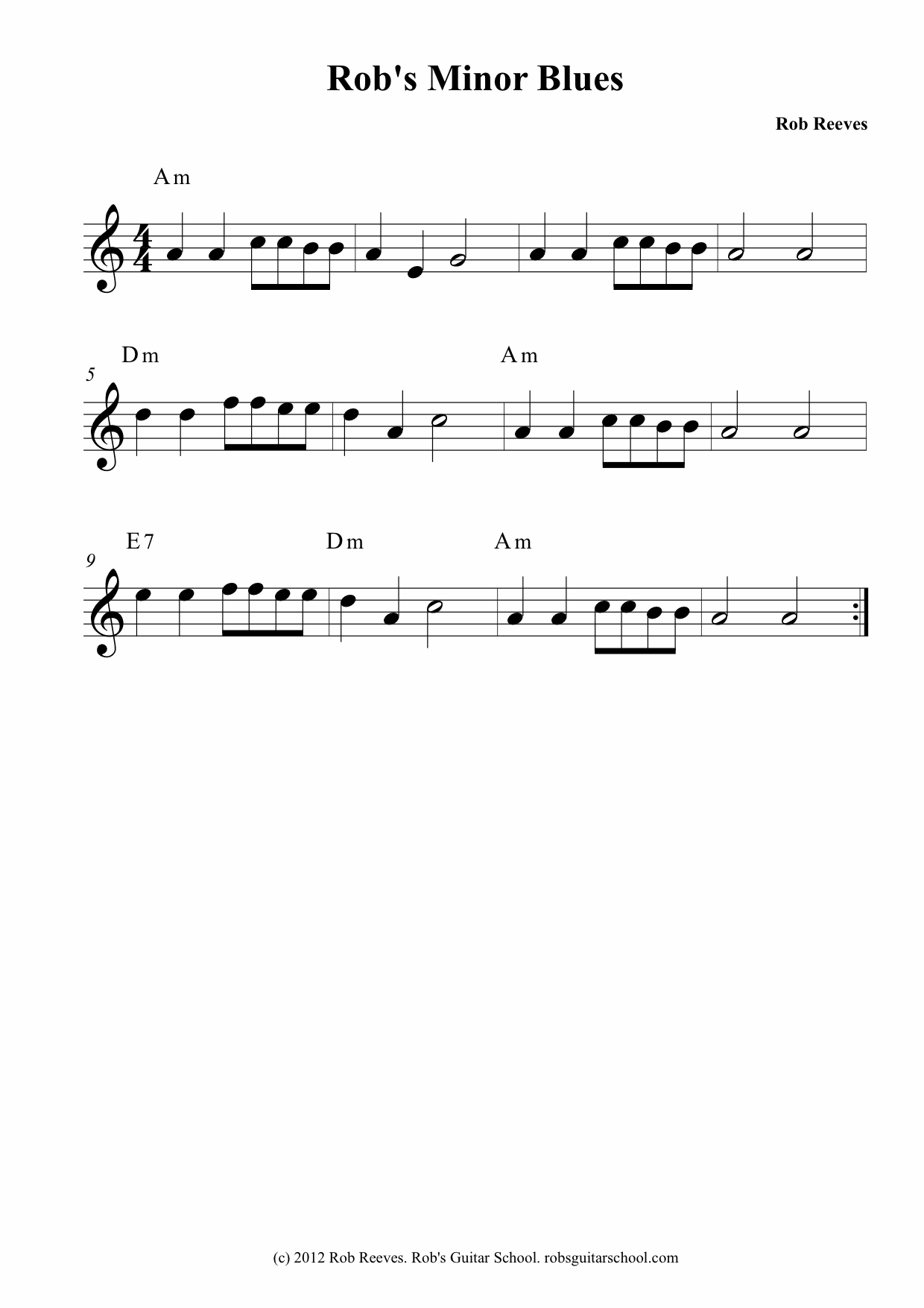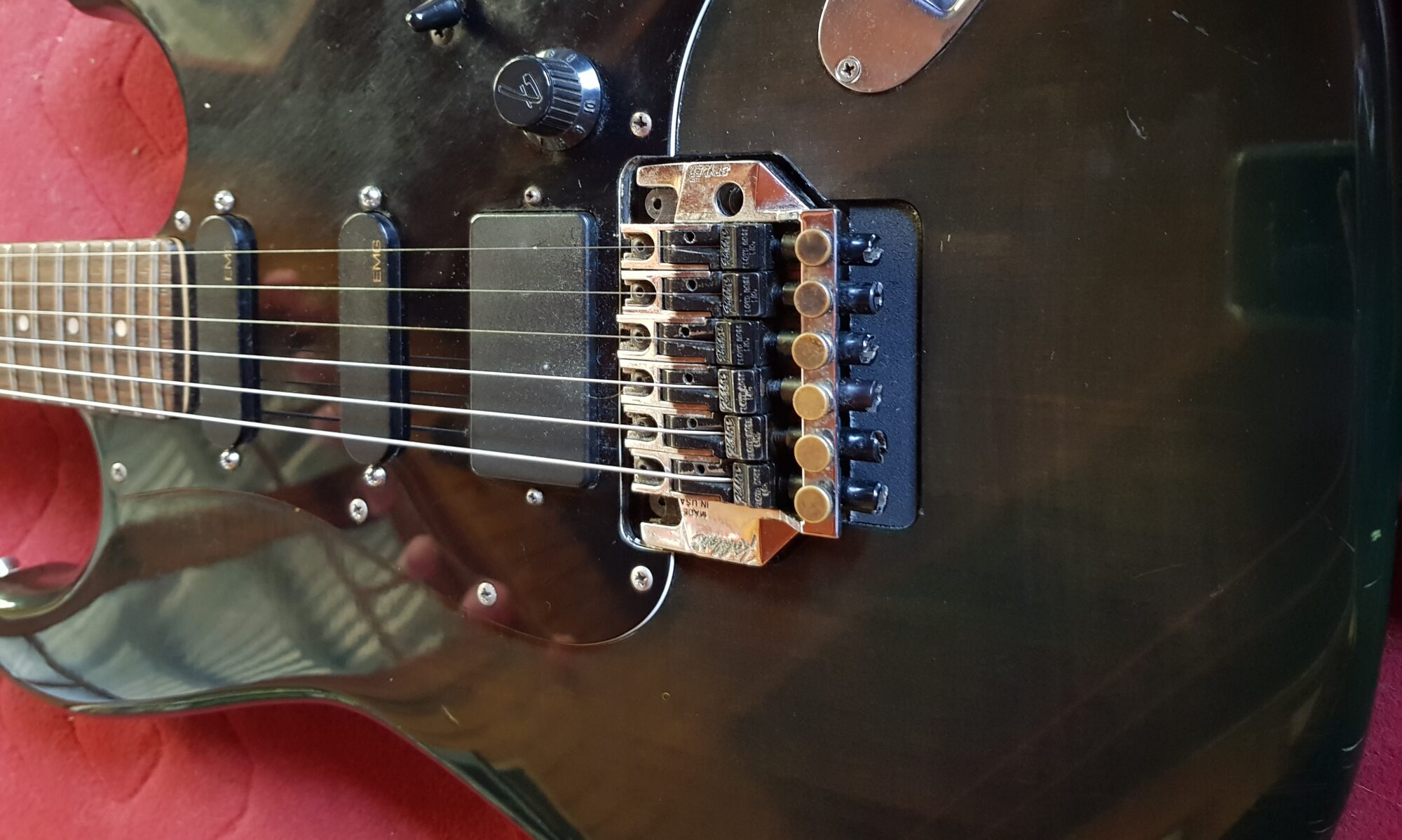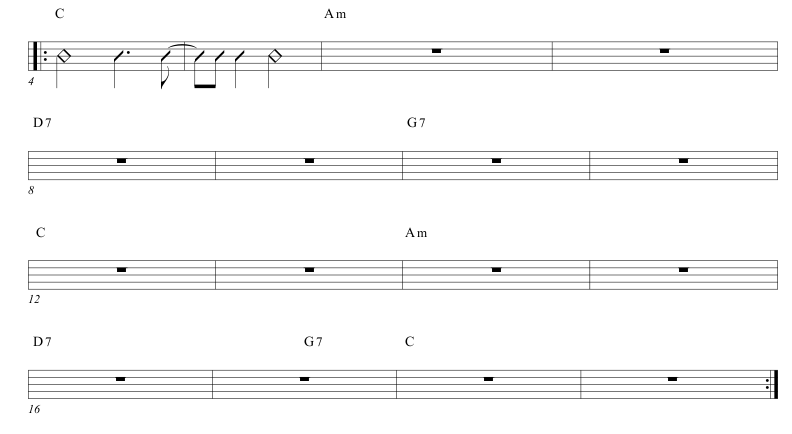The Blues form is one of the basic forms for jamming in rock, jazz, and of course blues. Here is a practice track to help get your chops up to speed on the A minor blues. The chord progression is a typical blues variant, with minor I and IV chords. Often a V chord appears in the last bar of a blues, however this final V chord is often omitted as in this case!
There are many possibilities for soloing over such a progression, a good starting point is the notes of the C major scale, which may also be referred to as the A natural minor scale, or the Aeolian mode of C. This gives us both a flat 9 (F) and a sharp 9 (G) to play over the E7 chord. Alternately, we can use the A minor pentatonic scale, which is in realty a subset of the C major notes, omitting the F and the B. Using the A minor pentatonic, be sure to try bending your G up a semitone on the E7, and try bending your D up a tone on the Am.
An alternative approach is to bass your playing around the chord arpeggios. We can use the Am7 arpeggio over the Am, the Dm7 arpeggio over the Dm, and the E7 arpeggio over the E7 chord.
We can drop in some colour notes to our arpeggios, seconds work over all three chords, while a major sixth sounds good over the Dm (creating a minor sixth sound). We can drop a #5 (C) in on the E7 (creating an E7#5 sound).
Another possibility is to play with the A harmonic minor scale over the E7, where it has the necessary G# to match with the G# in the E7 chord. This give a little bit of a gypsy jazz flavour over the straight ahead rock backing. Harmonically, the harmonic minor can work over all the chords – try it out and see it you like it!
Here is the practice track. There are four repetitions of the progression. Play the tune over the first, then take two choruses for a solo, then play the tune again. You will hear the rhythm in the organ count you back to the top in each bar 12, which will help you know where you are in the progression, so you can pick up the tune in the right place again!
Rob’s Minor Blues





